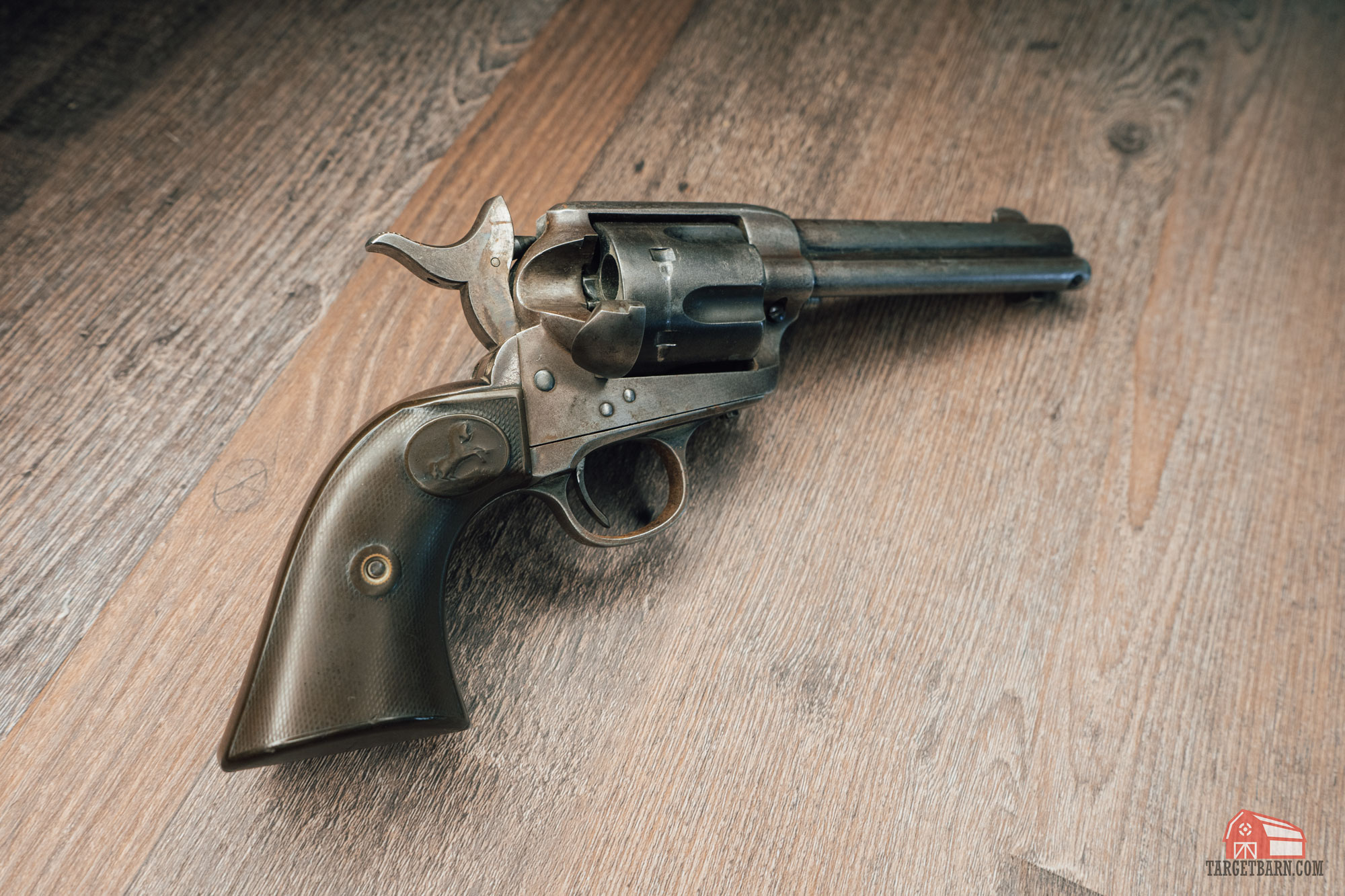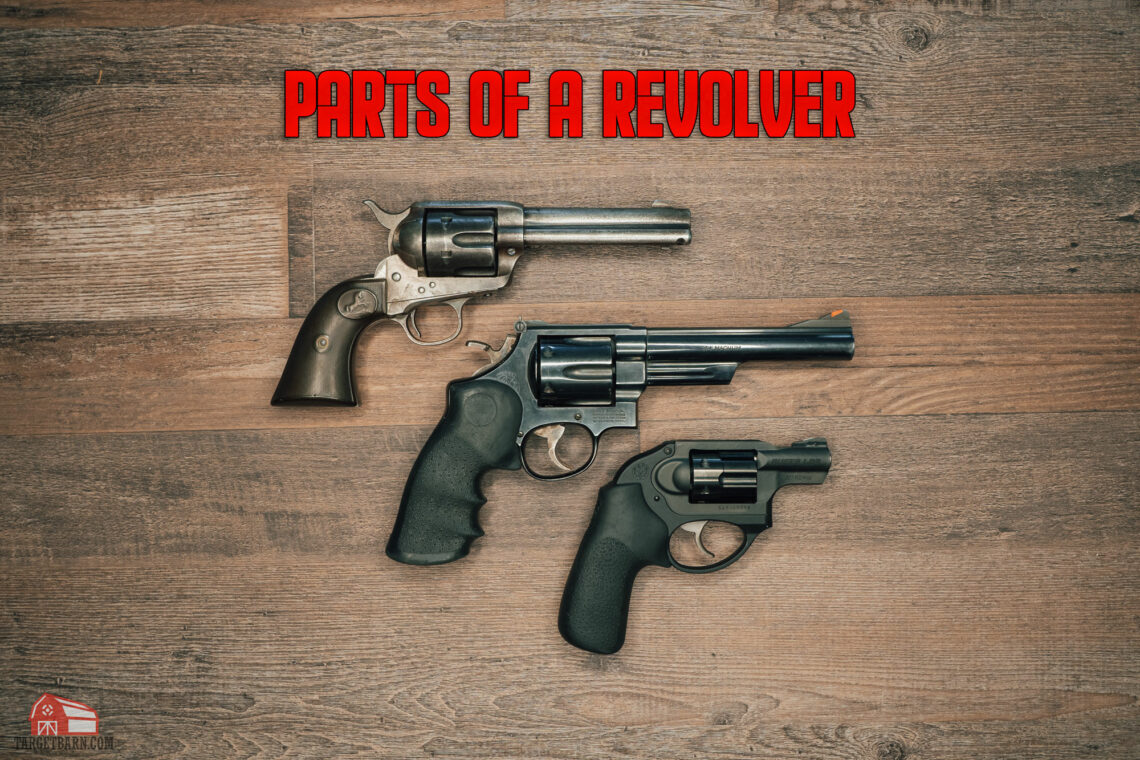As a revolver shooter, it’s important to know and be able to identify the different parts of a revolver. In this guide, we won’t be looking at every single pin and spring, but we will cover the major parts of a wheelgun that you should know!
Basic Parts of a Revolver
First, let’s look at the basic parts of a revolver.
- Barrel – The barrel is the metal tube that a bullet travels through when fired.
- Cylinder – The cylinder holds the ammunition. It is a cylindrical shaped piece of steel that can have anywhere from five to ten chambers that each hold one round of ammo. The cylinder will rotate to align the chamber with the barrel with either a trigger pull (double actions) or by cocking the hammer (single action).
- Frame – The metal piece of the revolver that acts as the body, holding all its other parts.
- Muzzle – The muzzle is the end of the barrel that the bullet exits from.
- Sights – The front and rear sights are located at the top of the gun and allow the shooter to aim.
- Hammer – The hammer is a moving piece located behind the cylinder and centered with the barrel. It strikes either a firing pin or cartridge primer in order to fire a round. On single action revolvers, the shooter must manually cock the hammer in order to fire a round.
- Trigger – The metal piece that the shooter pulls back with their finger to fire the revolver. The trigger will perform different functions on double action vs. single action revolvers.
- Trigger Guard – A loop surrounding the trigger to prevent the shooter from accidentally pulling the trigger.
- Grip – The part of the revolver that the shooter holds in order to fire a round. It may be wood or a rubber material for easy gripping.
- Cylinder release – The cylinder release is a small lever found on the left side of a revolver. Its purpose is to allow the cylinder to swing out for loading and unloading rounds. It is spring-loaded and typically pushed down, forward, or in to release the cylinder.
- Top strap – The metal piece that goes over the top of the cylinder and is part of the frame. Some revolvers, like early Colt revolvers, don’t have a top strap.
Parts of a Revolver’s Cylinder
As we pointed out in the previous section, the part of a revolver that holds the ammo is the cylinder. Let’s look at the parts of the cylinder.
- Crane/yoke – The piece that swivels out and supports the cylinder. Smith & Wesson uses the term yoke, while other revolver makers call it the crane.
- Chambers – The openings in the revolver’s cylinder that hold ammunition. Each chamber holds one individual round.
- Extractor Star – The star-shaped piece at the top of the cylinder that pushes out the cartridges out of the cylinder when the shooter presses the ejector rod.
- Ejector Rod – The ejector rod ejects spent casings or cartridges that are located in the chamber when pressed by the shooter. In a single action revolver, this will eject the round or casing one at a time. In a double action revolver, all of the rounds or cartridges in the cylinder will eject.
- Loading Gate – In single action revolvers with fixed cylinders, the shooter must insert rounds at the loading gate. Rather than using a cylinder latch to hinge the cylinder open, the shooter opens the loading gate at the rear of the cylinder and inserts or ejects one round at a time. To rotate the cylinder, the shooter must bring the hammer to a half cock. Once done loading rounds, the shooter closes the loading gate.

As we said earlier, this isn’t list ins’t a comprehensive list of every screw, pin, and spring that make up a revolver. Instead, it’s a good overview of the parts you should know. We’ve also previously covered the parts of semi-auto pistols if you’d like to continue learning about handguns!













